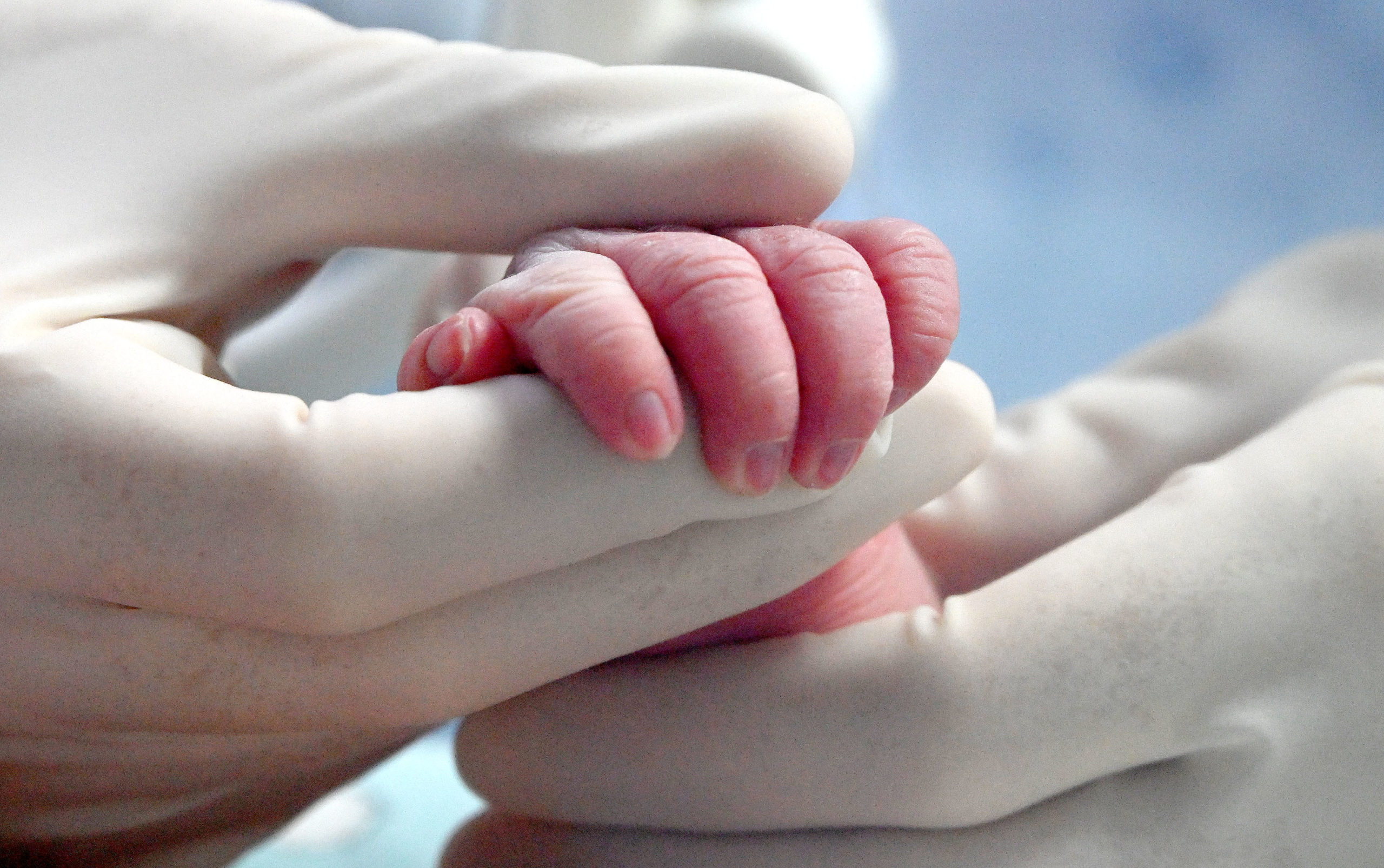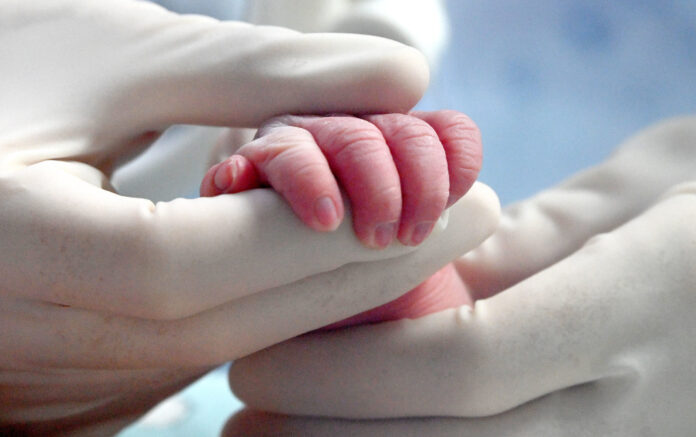
In 1954, Russian scientists successfully grafted the still-living head of a puppy onto an existing adult dog. I recently stumbled on a photo of the resulting horror which I think will haunt me forever. But why is it upsetting?
Those untroubled by bourgeois moral shibboleths would probably explain their instinctive revulsion to a two-headed dog by simply saying “yuck, that’s unnatural”. This is, of course, true, but those who try to stick to elite moral orthodoxy will struggle to make the same point. For today, the idea of “natural” is highly politicised.
This leaves us on the back foot, in responding to the accelerated advance of biomedical technology. Many of the advances it brings take less obviously grotesque forms than a two-headed dog; but even (or especially) where they come dressed as wins for civil rights, the unease is as deep as it is difficult to articulate.
One such uneasy debate erupted over the weekend, when the Guardian carried a long article about Corey Briskin and Nicholas Maggipinto, two New York men who have filed a class action complaint with the US Equal Employment Opportunity Commission (EEOC) against the City of New York. They argue that, unlike female colleagues, their health insurance doesn’t cover IVF or surrogacy in the case of infertility, and that this constitutes discrimination. In their view, the fact that both parties are male amounts to “situational infertility”, and as such their healthcare should fund the cost of gestational surrogacy.
Surrogacy is a sensitive topic, especially where it concerns same-sex couples. There are, after all, real living human children in question, and loving parents. To complicate things further, asking questions can easily be read as – or actually tip over into – overt attacks on gay and lesbian people.
But the subject needs to be addressed. For what Briskin and Maggipinto are calling for, in the name of equality, goes much further than fulfilling the longing for a family. It’s a radical transformation of what medicine is, from a discipline that seeks to restore normality, to one that treats normality as a problem to be solved. And when we look closer, this transhumanist shift in fact attacks the conceptual foundations of gay rights themselves.
One reason “that’s unnatural” doesn’t hold much water today as an objection is that “educated” moral consensus views claims of “naturalness” largely as stalking-horses for bigotry. And this isn’t wholly baseless: histories of, for example, racial justice afford plenty of scientific-sounding justifications for why convenient imbalances of power were in fact “natural”.
But does it follow from this that the inverse is true, and, as Simone de Beauvoir claimed in The Second Sex, “Nothing is natural”? In effect, this is the elite consensus. The problem, though, is that some kinds of “natural” are far from socially constructed, arbitrary, or invented by chauvinists to oppress women or minorities.
Humans, like other species, have many consistent physiological features, developmental patterns and behaviours, evolved over millennia. Disciplines such as ethology and phylogenetics study such patterns, and the overall form of an organism is sometimes referred to as its “bioplan”. And humans, just like other organisms, have a bioplan.
We may dispute its outer reaches, but the overall pattern is evident to even little children. Indeed, what “normal” looks like is usually inferred from observation long before (as most parents wincingly discover) toddlers can be taught not to make loud comments about outliers. Nor is it just about what shape we are. Some patterns are developmental, such as puberty, and some, such as sex dimorphism, are fundamental to our continuation as a species. The human bioplan, under normal circumstances, requires a small and a large gamete to make a new human – plus a nine-month gestation period within a living human woman.
Briskin and Maggipinto are asking that something conventional medicine would treat as normal – the fact that they can’t gestate a baby, because both of them are male — be viewed not as a natural limitation but a healthcare issue deserving of treatment.
I don’t want to rehash debates over whether any of us has a “right” to genetic offspring. What concerns me is how the wider field of medical science changes, when you reframe the bioplan itself as a medical problem. In effect, you’re turning medical science inside out, so the human “normal” is no longer a guide to the desired end-state of medicine. Rather, it’s an obstacle to the limitless outworking of human desire.
In its tech-optimist, right-libertarian form, this premise underpins Elon Musk’s experimental Neuralink technology, which Musk says will eventually be like “a FitBit in your skull”. Similarly, it underpins the US Government’s recent decision to funnel $2bn toward biotech research that will be able to “write circuitry for cells and predictably program biology in the same way in which we write software and program computers”.
In its progressive, radical blank-slatist form, overcoming the human (sexed) bioplan is a core premise of transgender rights, as, for example, where advocates talk about children undergoing “the wrong puberty”. And it also underpins social justice arguments for “fertility equality”, in which surrogacy is viewed as a legitimate use of technology to overcome unjust limits imposed by normal human physiology.
What both the tech utopians and the social-justice kind overlook (or choose to ignore) is that viewing the normal human organism as a set of medical challenges comes with a hierarchy of money and power baked in. Cutting-edge experimental medicine comes at a cost — both to its prospective customers, and also sometimes for its test subjects, as with the young person who died of necrotising fasciitis after an experimental surgery to craft him a neovagina out of his own colon.
Specifically in the case of surrogacy, this means rich men and women, such as Briskin and Maggipinto (or indeed Elon Musk’s baby-momma, the singer Grimes) can take advantage of the potential opened up by limitless, transhumanist medicine, to evade their own physiological constraints or simply (as in Grimes’ case) outsource the gruelling and risky aspects of “normal” maternity to someone else. Meanwhile the “work” of gestation, along with its non-trivial risk of invasive surgery, lifelong subsequent complications, or even death, gets outsourced — usually to poorer women, and often under exploitative conditions in developing countries.
These asymmetries aren’t exclusive to same-sex commissioning parents, of course. Surrogacy is always at risk of propagating such abuses, even where the commissioning parents include a woman. But if surrogacy combines commerce and medicine in ways that are fraught with ethical issues and highly vulnerable to exploitation, its transhumanist re-founding structurally presupposes the existence of surrogacy. Within the transhumanist frame, where there’s an all-male couple that longs for genetic children, the “cure” necessitates a fertile uterus – and how women feel about this is largely beside the point.
But surely we just need safeguards so only consenting women are involved? Briskin and Maggipinto draw an analogy from prostitution to make this argument. Against this, though, 50 years of the sexual revolution should have taught us how flimsy a defence “consent” is, against power asymmetries. There’s no shortage of testimony out there from survivors of the sex industry, on the horrors many have endured in the course of ostensibly “consensual” activities. And a glance back over the recent outpouring of MeToo should remind us that where vast disparities in wealth and power exist, “consent” is often a rogues’ charter even outside commercial transactions.
It doesn’t take much thought to extend the MeToo dynamic to fertility “services”. Nor does it take much more to see how it applies to “consensual” commodification of other body parts. Women already sell their eggs to the fertility industry; why shouldn’t we sell a kidney or part of their liver, provided everyone has consented?
If we accept the basic justice of transcending biophysical limits, there are no theoretical boundaries at all on what we can do. We can’t object to the Brazilian surgeon constructing neovaginas for trans women out of fish skin – for we’ve already accepted that “unnatural” is merely a stalking-horse for bigotry. And from here we have very little ground for objecting to “upgrades” that far more radically alter the human “normal”.
You may scoff that this is all just hysteria. Recall, though, that the “slippery slope” argument on euthanasia was once dismissed as hyperbole. And yet based on cases from Belgium and Canada, those arguments weren’t just accurate but not nearly hyperbolic enough.
Surely, though, it’s worth the risk, for the sake of equality and family life in same-sex couples? On the contrary, we should beware transhumanist arguments that seem to be grounded in gay rights. For the abolition of “nature” at the root of this worldview is already coming back to bite those gay men and women who first cheered on the change.
Gay rights is grounded in the claim that same-sex attraction is natural and innate. But if there’s no such thing as “natural”, this justification is abruptly eliminated, leaving gay men and women once again vulnerable to pressure to change their behaviour. And indeed, this is already happening, via trans activism: there, gay and lesbian people are now routinely accused of bigotry if they reject “gay” partners of the opposite sex, while their (natural, normal) same-sex orientation is reclassified as a “genital fetish“.
Most people, gay or straight, who resort to surrogacy do so to satisfy their longing to love and care for a child. We should recognise that this is at root a deeply human desire. But if love is the glue that holds human communities together, it can also drive choices with wider negative impacts. Surrogacy, and particularly surrogacy as a “cure” for normal biological limitations, is such a choice.
It opens the door to a limitless, profit-driven drive to deregulate the human organism — a drive that will, in the last count, mostly benefit Big Biotech. And this pathway only stays in the warm light of love and normalcy for a few steps. After that, we’re into the realm of monsters: mutilated children, human/animal chimeras, gamete and organ harvesting and medical experimentation, to name but a few already-existing examples.
If we continue down this road, gay men and women will end up losing the (only recently acquired) right to be naturally gay. And if this is bad enough, it will come to seem trivial next to the triumph of commercial biomedicine, and the swarm of protean horrors that comes slithering in its wake.








